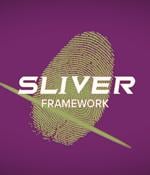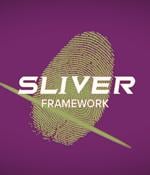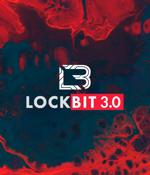Security News

The open-source, cross-platform kit called Sliver is becoming an attractive alternative. A report from Microsoft notes that hackers, from state-sponsored groups to cybercrime gangs, are more and more using in attacks the Go-based Sliver security testing tool developed by researchers at BishopFox cybersecurity company.

The open-source, cross-platform kit called Sliver is becoming an attractive alternative. A report from Microsoft notes that hackers, from state-sponsored groups to cybercrime gangs, are more and more using in attacks the Go-based Sliver security testing tool developed by researchers at BishopFox cybersecurity company.

The Chinese Winnti hacking group, also known as 'APT41' or 'Wicked Spider,' targeted at least 80 organizations last year and successfully breached the networks of at least thirteen. One of Wintti's unique deployment methods for the Cobalt Strike beacons involved obfuscating the payload on the host to evade detection by software.

The Chinese Winnti hacking group, also known as 'APT41' or 'Wicked Spider,' targeted at least 80 organizations last year and successfully breached the networks of at least thirteen. One of Wintti's unique deployment methods for the Cobalt Strike beacons involved obfuscating the payload on the host to evade detection by software.

Researchers have disclosed a new offensive framework called Manjusaka that they call a "Chinese sibling of Sliver and Cobalt Strike." "A fully functional version of the command-and-control, written in GoLang with a User Interface in Simplified Chinese, is freely available and can generate new implants with custom configurations with ease, increasing the likelihood of wider adoption of this framework by malicious actors," Cisco Talos said in a new report.

Researchers have observed a new post-exploitation attack framework used in the wild, named Manjusaka, which can be deployed as an alternative to the widely abused Cobalt Strike toolset or parallel to it for redundancy. Its RAT implants support command execution, file access, network reconnaissance, and more, so hackers can use it for the same operational goals as Cobalt Strike.

A threat actor associated with the LockBit 3.0 ransomware-as-a-service operation has been observed abusing the Windows Defender command-line tool to decrypt and load Cobalt Strike payloads. "Once initial access had been achieved, the threat actors performed a series of enumeration commands and attempted to run multiple post-exploitation tools, including Meterpreter, PowerShell Empire, and a new way to side-load Cobalt Strike," researchers Julio Dantas, James Haughom, and Julien Reisdorffer said.

A threat actor associated with the LockBit 3.0 ransomware operation is abusing the Windows Defender command line tool to load Cobalt Strike beacons on compromised systems and evade detection by security software. Security solutions have become better at detecting Cobalt Strike beacons, causing threat actors to look for innovative ways to deploy the toolkit.

A threat actor associated with the LockBit 3.0 ransomware operation is abusing the Windows Defender command line tool to load Cobalt Strike beacons on compromised systems and evade detection by security software. Security solutions have become better at detecting Cobalt Strike beacons, causing threat actors to look for innovative ways to deploy the toolkit.

APT hacking groups and ransomware operations are moving away from Cobalt Strike to the newer Brute Ratel post-exploitation toolkit to evade detection by EDR and antivirus solutions. In 2020, Chetan Nayak, an ex-red teamer at Mandiant and CrowdStrike, released Brute Ratel Command and Control Center as an alternative to Cobalt Strike for red team penetration testing engagements.